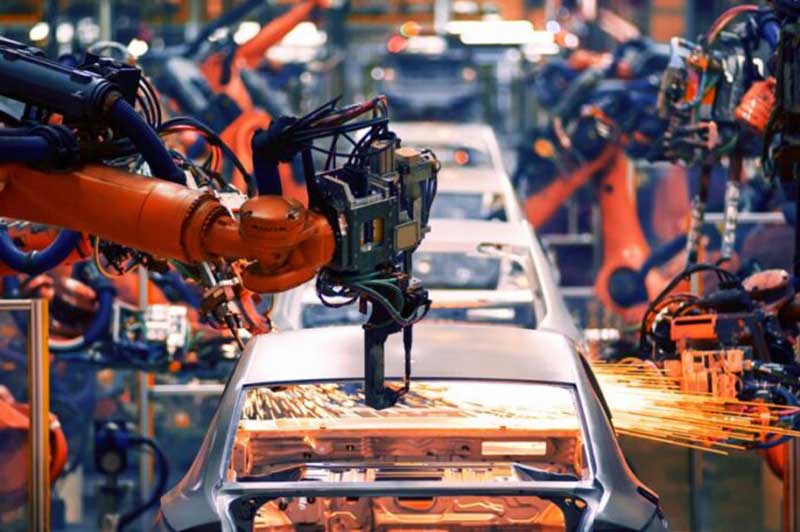
Let’s delve into the remarkable growth of the Indian automobile industry, reaching a valuation of US$ 32.70 billion in 2021 and projected to hit US$ 54.84 billion by 2027. The blog explores the industry’s embrace of innovation, government initiatives, and the promising future outlook. Insights from industry leader Sanjay Thakkar, Chairman and founder of Landmark Group, offer a valuable perspective on the challenges and opportunities brought about by GST in the Indian automotive sector.
In recent years, the Indian automobile industry has experienced remarkable growth, establishing itself as a significant player on the global stage. The 2021 valuation of the Indian passenger car market stood at US$ 32.70 billion1 and is projected to reach US$ 54.84 billion1 by 2027, demonstrating a Compound Annual Growth Rate (CAGR) of over 9% from 2022 to 20271. India holds a robust position in the global heavy vehicles market, being the largest tractor producer, the second-largest bus manufacturer, and the third-largest heavy truck manufacturer worldwide. Forecasts by NITI Aayog and the Rocky Mountain Institute (RMI) suggest that India’s electric vehicle (EV) finance industry is poised to reach Rs. 3.7 lakh crore2 (US$ 50 billion) by 2030.
This evolving industry has embraced innovation, with manufacturers incorporating cutting-edge technologies such as electric vehicles, connected cars, and advanced safety features. The future outlook remains promising, driven by various factors, including government initiatives like the FAME Scheme, Automotive Mission Plan 2026, scrappage policy, and Production-Linked Incentive (PLI) schemes that promote electric and sustainable mobility. As the industry charts its course into the future, the impact of GST remains a critical factor influencing its trajectory.
The Impact of GST Indirect Taxation on Uniform Taxes in India’s Auto Sector
The implementation of the GST in the automobile sector marked a paradigm shift in the taxation framework. The integration of taxes led to a fundamental change in the industry landscape, prompting the consolidation of point-of-sale and delivery showrooms. GST ensured that the purchase price of vehicles did not escalate, eliminating the cascading effect and reducing the overall cost of automobiles.
The introduction of GST has led to the abolition of previous levies, such as NCCD and other levies, which were outside the credit mechanism, resulting in a reduction of additional cost burdens. The practice of rate-buying, involving purchasing products from states with lower taxes compared to others, has automatically discontinued the implementation of uniform taxes nationwide.
Discover the growth of India’s auto industry, delve into the impact of GST and indirect taxation. Challenges, opportunities, and grasp the evolving landscape.
GST Challenges and Solutions in the Indian Automobile Sector
The GST rate for cars in India is influenced by the fuel type. The rates are categorized as follows: Cars for differently-abled persons – 18%; fossil fuel-based Cars, including Luxury Cars and SUVs – 28%; and Electric Vehicles – 5%. Additionally, the owner is required to pay an applicable cess rate on top of the GST rate, ranging from 1% in small cars to 22% in SUVs. Electric cars are exempt from the levy of compensation cess. This dual-tier system aims to provide a nuanced taxation structure, taking into account both the size and fuel efficiency of the vehicles, ensuring a more comprehensive approach to taxation in the automotive sector.
The automobile sector faces few challenges under GST, contributing to complexity and ambiguity in taxation. The issue of complex classification, particularly for sports utility vehicles (SUVs), has been a persistent concern. However, a recent circular has offered some clarity on the criteria defining SUVs, alleviating uncertainties surrounding their taxation. Another challenging aspect is the taxation of second-hand motor vehicles. Issues also continue to persist in the taxation of post-supply discounts and warranty services within the sector. While a recent circular attempted to provide clarification on the taxation of warranty services, there remain certain ambiguities, especially concerning extended warranty sales.
The job work model, crucial in the automotive industry, faces ambiguity in its taxation under GST. Ongoing litigations and the issuance of circulars are expected to bring further clarity to these matters, aiding businesses in navigating the complexities of GST in the automobile sector. Despite these challenges, it’s essential to acknowledge that GST has brought about substantial benefits to the industry, and with time, concerted efforts and clarifications will likely iron out these issues for a more seamless taxation framework.

Sanjay Thakkar’s, Chairman & Founder – Landmark Group, Take on Navigating Challenges and Leveraging Opportunities in Auto Industry
GST in the Indian automobile sector has brought about a mix of challenges and opportunities. While the streamlined tax structure has simplified compliance and reduced tax-related complexities, adapting to the new system required a period of transitional adjustment for us. The shift in GST rates for various automobile segments prompted a reassessment of pricing strategies and market positioning.
We appreciate the positive impact of GST on logistics and supply chain efficiency, contributing to cost savings, and the unified tax structure has also facilitated smoother interstate transportation of vehicles and components. However, challenges persist, particularly in managing the transition period and aligning business practices with the changing tax norms. Recent clarifications issued by the government, be it regarding SUV nomenclature or warranty taxation, have come as a relief, providing much-needed guidance.
As the industry continues to navigate the post-GST landscape, we emphasize the importance of continuous dialogue with stakeholders and policymakers. This collaboration is crucial for addressing emerging challenges, fine-tuning the regulatory framework, and ensuring sustained growth in the Indian automobile sector. The adaptability of industry players and a proactive approach toward evolving regulatory landscapes play a pivotal role in shaping the future trajectory of the automotive industry in India.
